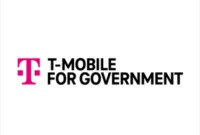Hubbard Radio Washington DC, LLC. All rights reserved. This website is not intended for users located within the European Economic Area.
On Air: Federal News Network

Ask the CIO: Energy Department’s Idaho National Lab
On Demand
In this exclusive webinar edition of Ask the CIO, Dan Elmore, the executive director of the Idaho National Lab Wireless Security Institute in the Energy Department, said agencies need to better understand the potential impact of 5G on their mission areas.
Listen to T-Mobile’s Michelle Faison-Oldham provide an expert industry perspective:
Duration: 1 hour
Cost: No Fee
The Energy Department’s Idaho National Lab is putting its research muscle behind 5G.
INL recently cut the ribbon of a new 5G commercial scale testing range to further analyze the current and future security challenges around this new spectrum.
Dan Elmore, the executive director of the Idaho National Lab Wireless Security Institute, said the lab has been working on 5G security issues for three or four years now. But this new testing range will take these efforts to a whole new level.
“That’s an open air range with lots of frequency agility. It’s isolated from the commercial network, like Verizon and AT&T so it allows for a lot of flexibility and test configurations, different things to look at that you can’t do in a commercial network, and it’s independent,” Elmore said on Ask the CIO. “We’re not in business to make widgets, or things. We’re not in partnership with manufacturers. So what we’re able to evaluate is independent of all of that, science-based fact base.”
First of kind test range
The new testing range, which Elmore believes is a one-of-a-kind in the nation is a live, open air network that could support a small city or region with high capacity service.
Elmore said through this range, INL is researching potential vulnerabilities, testing out mitigations and other technologies.
“Our initial focus for it is supporting the Defense Department’s 5G initiatives. Of all of the government agencies that I’m aware of, DoD really has gotten out in front of this because they realized, like many others, 5G is coming, whether you want it or not,” he said. “The earlier generations are going to be legacy and taken out of service at some point here in the near next few years. 5G is going to enable a lot more capabilities, a lot more missions than previous generations of cellular could, and so with that, it’s going to have an impact. What is that going to look like? How do we need to operate with it? What are some of the concerns? For example, if we use 5G to enable in hospitals, medical device connectivity, autonomous vehicles, unattended vehicles, other types of mission use cases important to the military right now? So that’ll be our initial focus, but, I think there’s so many parallels to what some of these experimentation will do for the Defense Department, that eventually, we’ll have some lessons learned that will come out of that and inform other sectors, other agencies and also the commercial market.”
The test range is just the latest effort by Idaho National Lab around 5G. INL has worked with DoD and other agencies to help educate the benefits and potential of 5G for the last several years.
It started about three years just testing devices against 5G networks.
Elmore said now INL is looking at back-end components and radio access network components to see how those products work on 5G networks.
In addition to testing equipment, Elmore said agencies have approached INL to help educate their network and mission owners around 5G. National labs, typically, don’t provide traditional training, but INL has provided some education specifically around 5G security to agencies. Elmore said he expects the need for more training to continue to rise over the next year.
“We’ve put hosted and run now five nationally attended wireless security workshops. When you read some of the policy documents or recommendations coming out of Washington think tanks, most of them have some common themes. One is the collaboration at scale, getting the right folks together across the nation to work on these things. So we took some leadership initiative and pulled together five different workshops, each one focused on a different area,” he said. “One was autonomous vehicles earlier in the year. We just finished one in Salt Lake City focused on aviation cybersecurity. This is heavily driven by Department of Homeland Security and Transportation Security Administration. As 5G rolls out in that sector, what do we need to be thinking about? What are some of the pitfalls? What are some of the vulnerabilities that we need to maybe change devices or techniques or methods or procedures as 5G starts to impact the aviation sector?”
Education is key for 5G
He said INL collected lessons learned from each of the workshops as well as identifying next steps, gaps and where research and testing can go next for agencies and academic institutions.
Elmore added INL is teeing up three new research initiatives focused on 5G and Next G in 2023 as well.
“We’re really just getting started in a new major effort taking a deeper look at the 5G security standards because some of those be may be exploited, or have unintended consequences that depending on how they’re implemented. We’re just starting to tap into that and utilizing our in town laboratory system and, soon our newly installed external system. That’ll be a little bit longer term effort over the next six months to a year to uncover more of those,” he said. “With the Defense Department effort, there’s other companies and other entities involved with the overall effort, and some of those will be developing technologies or systems to do certain things on the 5G front as DoD deploys overseas onto those infrastructure that that’s there. We’ll help evaluate some of those as well, from a security perspective, independently validate whether this manufacturer thinks they’ve got it right. They may or they may not. We’ll put it through some independent validation here going forward over the next couple of years.”
One of the main reasons INL is focusing on the security aspects of 5G is because of the potential the new spectrum can bring to agency and private sector missions.
5G offers increased data throughput of 10 to 100 times more than 4G. It provides low latency and provides the ability to connect multiple devices.
“Everything enabled by 5G, and 5G uses software-defined radios, software-defined networking so because of those, we can connect, eventually, darn near everything,” Elmore said. “There’s additional considerations too. It will enable applications that aren’t possible with current generation like remote surgery or drone swarms, for example. All of that will be connected by through a 5G network. So really, now it’s incumbent on owners, users, mission owners, businesses to really think through how they could use how 5G to better enable their particular mission or business.”
Elmore said this means agencies and businesses must think about the efficiencies 5G could bring, how it could impact their business processes and what are the best use cases for using this new network spectrum?
Another benefit of 5G is the ability to employ network slicing, which is dividing up bandwidth using virtualization on the same network. This will improve how agencies use edge computing as well as increase operational accuracy and efficiency by decreasing network latency for things like autonomous vehicles and drones.
Elmore said one of the most important to this 5G puzzle is education.
“Certainly the network personnel, the CIOs, the IT folks in organizations are going to have to grasp this. There’ll be deployment considerations with 5G that they didn’t have to think about with 4G,” he said. “Most of the conversations I’ve had are about getting people to a common level of understanding of what 5G is going to bring to the table. Many most people have heard about 5G, so we step through a series of presentations to define what 5G is, what its potential is and what are some of the concerns with it that we need to be thinking about?”
By providing your contact information to us, you agree: (i) to receive promotional and/or news alerts via email from Federal News Network and our third party partners, (ii) that we may share your information with our third party partners who provide products and services that may be of interest to you and (iii) that you are not located within the European Economic Area.
Please register using the form on this page.
Have questions or need help? Visit our Q&A page for answers to common questions or to reach a member of our team.
Speakers

Dan Elmore
Executive Director, Idaho National Lab Wireless Security Institute

Jason Miller
Executive Editor, Federal News Network
Sponsors

By providing your contact information to us, you agree: (i) to receive promotional and/or news alerts via email from Federal News Network and our third party partners, (ii) that we may share your information with our third party partners who provide products and services that may be of interest to you and (iii) that you are not located within the European Economic Area.
